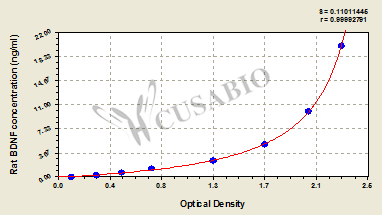The Rat Brain-derived neurotrophic factor (BDNF) ELISA Kit is a reliable and accurate tool for the quantification of BDNF in rat serum, plasma, and tissue homogenates. BDNF is a protein that plays a crucial role in the development and maintenance of the nervous system, particularly in the brain. This ELISA kit detects BDNF with high sensitivity, with a detection range of 0.312 ng/mL to 20 ng/mL and a sensitivity of 0.078 ng/mL.
The assay principle is a sandwich measurement, providing quantitative results that can be obtained in as little as 1-5 hours. The kit is optimized for use with a sample volume of 50-100ul, making it a cost-effective and efficient solution for researchers.
This ELISA kit is ideal for researchers investigating cardiovascular diseases, as BDNF has been implicated in the pathophysiology of these conditions. Additionally, our kit has been widely cited in scientific literature, with over 19 publications referencing its use.






